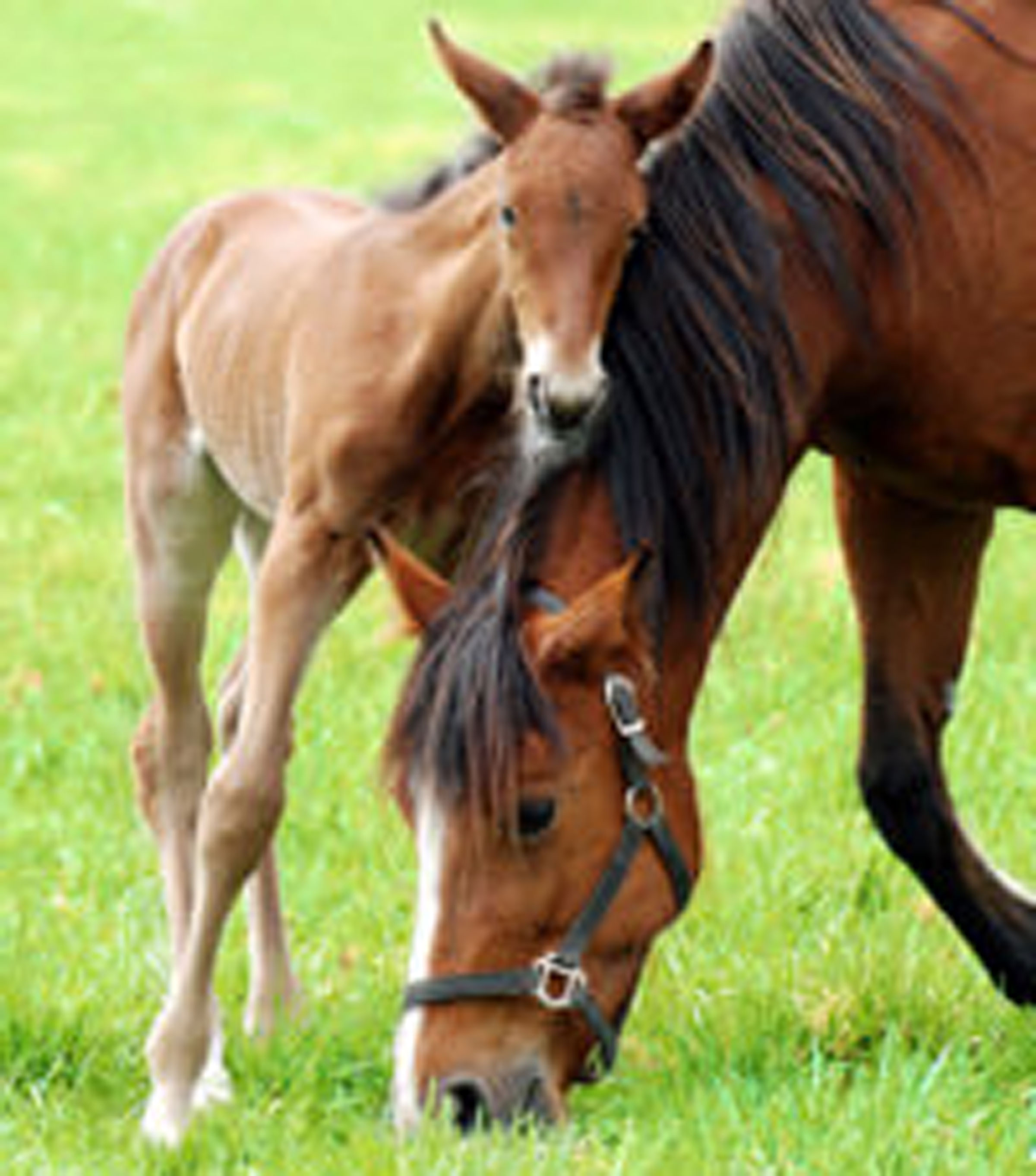
Commonly grouped under the term “Tying-up”, exertional rhabdomyolysis (ER) syndromes can be categorized into sporadic and chronic cases.
Chronic ER includes recurrent exertional rhabdomyolysis (RER) and polysaccharide storage myopathy (PSSM). RER is most commonly seen in Thoroughbreds, but it also affects Standardbreds and Arabians. PSSM predominantly affects Quarter Horses, but it also has been seen in a variety of other breeds, including Paints, Warmbloods, Appaloosas, Morgan Horses and draft breeds. In draft horses this disorder has also been termed equine polysaccharide storage myopathy (EPSM).
In Thoroughbreds, RER has been described as a heritable trait resulting in muscle necrosis during exercise.
PSSM is due to increased glycogen storage and abnormal polysaccharides in skeletal muscle.
Both problems respond well to a decrease in dietary sugar and starch and an increase in dietary fat intake.
Tying-up in horses is characterized by muscle stiffness and pain, sweating, blowing, trembling, reluctance to move, and often discolored urine (brown) that’s triggered by exercise. The medical term for tying-up is rhabdomyolysis, which means skeletal muscle (rhabdo) breakdown/damage (lysis). The horse might be agitated and even paw. Blood tests will show elevated levels of muscle enzymes.
Sporadic ER occurs when a horse isn’t conditioned and is exercised beyond its level of fitness. Don’t mistake eagerness for fitness, and don’t assume that the horse won’t do more than he is physically conditioned to do. Odds are that he will, and in two or three days his muscles will really be feeling the effects.
Muscular aches and pains are not something you can “see” easily, but they will manifest themselves as back and gait stiffness, sluggishness, poor attitude toward work, and even the development of vices and refusals. These can progress into sporadic episodes of tying-up or exertional rhabdomyolysis.
Short-term dietary changes and increased fitness will alleviate sporadic tying-up. Sporadic tying-up occurs most commonly in horses that are exercised in excess of their level of conditioning. This happens frequently when a training program is accelerated too abruptly, particularly after an idle period of a few days, weeks or months.
Increased exercise on hot, humid days might also elicit sporadic exertional rhabdomyolysis in susceptible horses because of high body temperatures, loss of fluid and electrolytes in sweat, and depletion of muscle energy stores.
In some instances, horses seem more prone to exertional rhabdomyolysis following respiratory infections. Therefore, horses should not be exercised if they have a fever, cough, nasal discharge, or other signs of respiratory compromise.
A well-designed, gradually increased exercise program and a nutritionally balanced diet with appropriate caloric intake and adequate vitamins and minerals are the core elements of treating sporadic tying-up.
As a horse begins to work more, its requirement for water will also increase. Make sure the horse has free access to clean, fresh water. Water and electrolyte loss through sweat can cause the horse to perform poorly, and in the worst case can make the horse become seriously ill.
Horses that fall under the broad spectrum of “Tying-up” can be managed specifically to decrease the adverse effects of these diseases. Grass or legume hay at a minimum of 1.5% of body weight should be fed daily. Avoid hay and grass that has increased carbohydrate concentration.
Grains and molasses should be removed from the diet due to their high carbohydrate content.
When the demand for energy is higher than that provided by forage alone, ingredients such as vegetable oil, rice bran and beet pulp should be used. Beet pulp has lower sugars and starches compared to any type of grain, meaning it has a small effect on blood glucose levels.
For horses that suffer from tying-up, a diet high in fiber and fat and low in grain (sugar and starch) is therapeutic. Progress can also be made with these horses in selecting forage that is low in sugar and starch. Standlee Premium Western Forage recommends Alfalfa Baled Forage, Alfalfa Cubes or Pellets, or Chopped Alfalfa and beet pulp. This article was written by Dr. Tania Cubitt of Performance Horse Nutrition. For more information from Standlee Premium Western Forage, please visit standleeforage.com.


